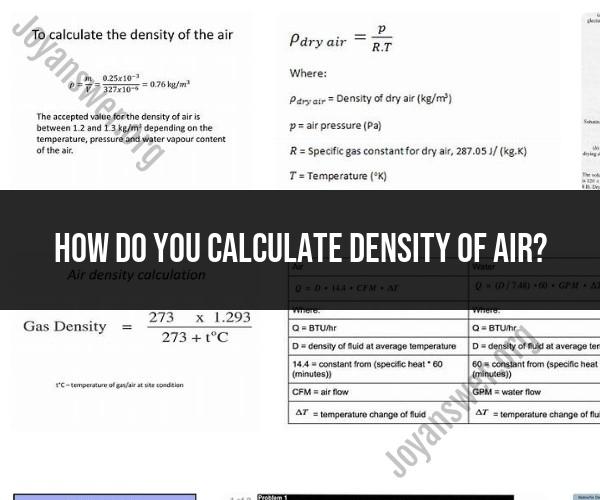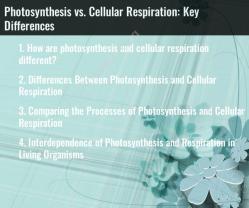How do you calculate density of air?
You can calculate the density of air using the ideal gas law, which relates the density of a gas to its pressure, temperature, and the gas constant. The formula for calculating air density is as follows:
Density (ρ) = (Pressure (P) * Molecular Weight (M)) / (Gas Constant (R) * Temperature (T))
Where:
- Density (ρ) is the air density in kilograms per cubic meter (kg/m³) or in grams per cubic centimeter (g/cm³) if you prefer to use those units.
- Pressure (P) is the absolute pressure of the air in pascals (Pa) or atmospheres (atm).
- Molecular Weight (M) is the molecular weight of dry air, which is approximately 28.97 grams per mole (g/mol).
- Gas Constant (R) is the specific gas constant for dry air, which is approximately 287.1 J/(kg·K) or 8.314 J/(mol·K) when using the ideal gas constant in the formula. The value you use depends on your choice of units for the other variables.
- Temperature (T) is the absolute temperature of the air in kelvin (K). You must use the absolute temperature, which is the temperature in degrees Celsius (°C) plus 273.15.
To calculate air density using this formula, make sure you use consistent units for pressure and temperature. For example, if you use pressure in pascals (Pa), temperature must be in kelvin (K).
Here's a step-by-step example:
Convert the temperature from degrees Celsius to kelvin:
- If the temperature is 25°C, add 273.15 to convert it to kelvin: 25°C + 273.15 = 298.15 K.
Determine the pressure of the air in pascals (Pa).
Use the formula to calculate air density.
Keep in mind that air density can vary with altitude and atmospheric conditions. In practice, atmospheric scientists often use reference values for temperature and pressure at sea level to calculate standard air density, which is approximately 1.225 kg/m³ (or 0.001225 g/cm³) at 0°C (273.15 K) and 101.325 kPa (1 atm) of pressure.
Calculating the Density of Air: Formulas and Methods
The density of air is the mass of air per unit volume. It is typically measured in kilograms per cubic meter (kg/m^3) or pounds per cubic foot (lb/ft^3).
There are a few different ways to calculate the density of air. One common method is to use the ideal gas law:
ρ = P / (RT)
where:
- ρ is the density of air (kg/m^3)
- P is the absolute pressure of air (Pa)
- R is the gas constant for air (J/(mol·K))
- T is the absolute temperature of air (K)
Another method for calculating the density of air is to use the following formula:
ρ = 1.225 * (273.15 / T) * (P / 101325)
where:
- ρ is the density of air (kg/m^3)
- T is the temperature of air (°C)
- P is the pressure of air (kPa)
Understanding the Science of Air Density Calculation
The density of air is affected by a number of factors, including temperature, pressure, and humidity. Temperature has a negative effect on density, meaning that warmer air is less dense than cooler air. Pressure has a positive effect on density, meaning that higher pressure air is more dense than lower pressure air. Humidity has a complex effect on density, but it generally decreases density.
Measuring Air Density for Various Applications
Air density is an important factor in a number of applications, including:
- Aviation: Air density affects the lift and drag on an aircraft.
- Meteorology: Air density is used to predict weather patterns and to track storms.
- Air conditioning: Air density is used to design and operate air conditioning systems.
- Pollution control: Air density is used to design and operate pollution control systems.
Air density can be measured using a variety of devices, including:
- Barometers: Barometers measure air pressure, which can be used to calculate air density using the ideal gas law.
- Psychrometers: Psychrometers measure temperature and humidity, which can be used to calculate air density using the second formula above.
- Densitometers: Densitometers directly measure air density.
Densitometers are the most accurate instruments for measuring air density, but they are also the most expensive. Barometers and psychrometers are less expensive, but they are not as accurate.
The best instrument for measuring air density depends on the application. For example, aviation applications require a high degree of accuracy, so densitometers are typically used. Meteorology and air conditioning applications do not require as high of a degree of accuracy, so barometers and psychrometers are typically used.












